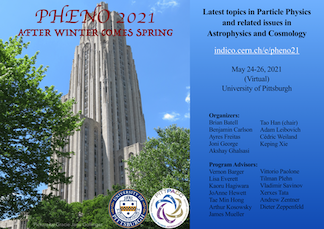Speaker
Description
The statistics of the supersymmetry breaking scale in the string landscape has been extensively studied in the past finding either a power-law behaviour induced by uniform distributions of F-terms or a logarithmic distribution motivated by dynamical supersymmetry breaking. These studies focused mainly on type IIB flux compactifications but did not systematically incorporate the Kähler moduli. In this talk I point out that the inclusion of the Kähler moduli is crucial to understand the distribution of the supersymmetry breaking scale in the landscape since in general one obtains unstable vacua when the F-terms of the dilaton and the complex structure moduli are larger than the F- terms of the Kähler moduli. After taking Kähler moduli stabilisation into account, we find that the distribution of the gravitino mass and the soft terms is power-law only in KKLT and perturbatively stabilised vacua which therefore favour high scale supersymmetry. On the other hand, LVS vacua feature a logarithmic distribution of soft terms and thus a preference for lower scales of supersymmetry breaking. Whether the landscape of type IIB flux vacua predicts a logarithmic or power-law distribution of the supersymmetry breaking scale thus depends on the relative preponderance of LVS and KKLT vacua.
